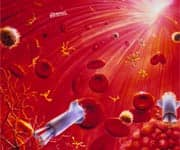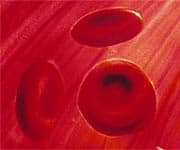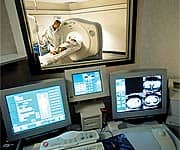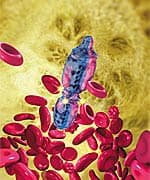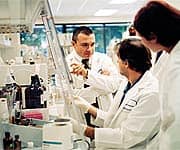Life Extension Magazine®
Imagine a future when tumor cells can be directly targeted with chemotherapy, eliminating a cancer patient’s systemic exposure to harmful side effects and even death from toxic chemo reactions. Nanotechnology scientists—with the financial help of endowed universities, the federal government, and private venture capitalists—believe that this fantasy may become a reality within our lifetimes. Although the debate about the validity of using nanotechnology in medicine continues, the emerging field of nanomedicine is gaining momentum in the medical device and drug-delivery arenas. As scientists explore ways of incorporating nanotechnology to treat disease and prevent illness, many believe nanomedicine has the potential to revolutionize medicine. The Emerging Science of NanomedicineNanomedicine, a derivative of nanotechnology, is the science of controlling molecular structures to create precise materials and devices.1 This technology centers on scientists’ ability to structure these materials and devices at the molecular scale to address medical problems through research and clinical practice. These “nanodevices” and structures would then be used in human biological systems at the molecular level for monitoring and repair purposes. Physicists predict that this precise approach could be used, for example, to repair damaged tissues, such as bones, muscles, or nerves. “There are certain things we can do today and there are certain things we’ll be able to do tomorrow,” says Robert Freitas, a Senior Research Fellow at the Institute for Molecular Manufacturing. “For example, when we have nanorobots 20 years from now we’ll be able to find all the cancers (in the bloodstream) and kill them. To build them (nanorobots) we’re going to have to go through a step-by-step process.” A nanometer is so small that it can’t be seen on a conventional lab microscope. But the use of nanometer-sized devices could be effective in medicine, scientists say, as they are roughly the same size in which biological molecules and structures inside living cells operate. Many of today’s medical tools are too large, and at the cell and molecular level are not small enough to manipulate our tiny cellular components. With more specific and precise nanotechnology tools, scientists say they’ll be able to better treat and diagnose diseases often associated with aging, such as heart disease and cancer. Whether or not nanomedicine would ultimately be the solution to today’s medical problems will be answered in two phases: the short- and long-term. Nano-based enzymes and other materials are more likely to take effect in the near future. Many of the more disease treatment-oriented benefits will likely occur in about a decade, when programmable medical nanomachines and nanorobots are developed.
Nanomedicine Research UnderwayThe federal government, academia, and the biotechnology industry have been exploring new ways to better study nanomedicine in recent years. In 2004, the National Institutes of Health (NIH) launched its Nanomedicine Roadmap Initiative, which was designed to spur a collaborative nanomedicine research effort. Under the initiative, a national network of eight Nanomedicine Development Centers was created to serve as a breeding ground for nanomedicine-based research and technology.2
Scientists hope that nanomedicine research will foster a greater understanding of disease processes, as well as more elegant diagnostic and treatment tools.“The goal is to intervene in the disease process with much greater knowledge,” says Jeffery A. Schloss, co-chair of the trans-NIH Nanomedicine Taskforce. Joining the NIH are several other groups exploring the utility of the molecular nanomachines, including the Institute for Molecular Manufacturing, the Laboratory for Molecular Robotics at the University of Southern California, and NASA. Government organizations in Europe, Japan, and Iran have also funded forums and research projects exploring nanomedicine. While funding has been scarce, private groups and seed capital firms are also interested in the technology. Biotechnology company Gilead Sciences sells a drug-delivery mechanism using lipid spheres, or liposomes, of 100 nanometers in diameter, which coat an anticancer drug that treats AIDS-related Kaposi’s sarcoma.3 Another leader in the field of nanotechnology and medicine is Zyvex, which claims to be the first molecular nanotechnology research and development company. Unlimited Potential: Diagnostics and Drug DeliveryThe term nanomedicine is often applied to chemicals, delivery methods, drugs, and diagnostic tools. To scientists, the potential ways to use nanotechnology in medicine are endless. One approach under study uses nanotechnology in tracking devices called quantum dots. Quantum dots are small semi-conductor devices that emit certain wavelengths of light according to their size. This makes them highly suitable as contrast agents for magnetic resonance imaging (MRI), positron emission tomography (PET), or as fluorescent tracers in optical microscopy. When inserted into the body, quantum dots can penetrate through both the skin and tissue and emit color to signal the presence of cancerous cells. Doctors can then peer into a tumor to find where it has spread by using quantum dots to examine nearby lymph nodes. In contrast, today’s technology calls for the dissection of many lymph nodes by a pathologist to find the malignant tumor. Scientists believe that quantum dots may also be useful as structural scaffolds in tissue engineering.
Furthermore, near-term nanotechnology benefits could be seen in improvements to the drug-delivery process. For example, nano-sized drug-delivery carriers called dendrimers, which are artificial molecules the size of a protein, could be capable of delivering medicine to an exact location. This targeted approach has already made it safer and more effective to render gene therapy in some research labs. The drug-delivery process could also benefit from hollow polymer capsules that release into the body only after swelling or compression. One of the most promising applications of nanotechnology in drug delivery is the use of nanoshells. These are small, gold-coated glass beads that seek out tumors in the bloodstream when injected. Nanoshells can produce heat by absorbing light. By binding them to antibodies and using infrared light to penetrate the skin and cause the nanoparticles to heat up, scientists may be able to destroy tumors without harming healthy tissue. This technique has already been used successfully in mice by a team at Rice University, which published its results in the journal Cancer Letters in 2004. In the mice, all tumors disappeared within 10 days and did not reappear.6
| |||||||
The Future: Nanorobots and NanoprobesOne of the pioneers in the field of nanotechnology is Ralph Merkle. Dr. Merkle has advocated for the engineering of computer-controlled tools that are smaller than cells, and can be built with the precision of drug molecules. In the paper, Nanotechnology and Medicine, Merkle argues that such tools will enable doctors to intervene at the cellular and molecular level, to remove barriers to the circulatory system, kill cancer cells, or control subcellular organelles.7
“Molecular machines will be able to heal and cure,” says Merkle, a computer scientist formerly affiliated with the Georgia Institute of Technology in Atlanta. “With technology, the tools will be very precise and will help us do better with aging and disease.” The results, Merkle says, will be seen in two phases. In the near future, Dr. Merkle predicts that dendrimers will be able to aid the drug-delivery process. But the more high-profile areas of nanomedicine aren’t likely to occur for many years, until after scientists have learned how to build nanorobots. For example, Freitas has designed nanorobots that could serve as artificial red blood cells, called “respirocytes,” which would carry oxygen through the body, and ultimately to the lungs. In the event of a heart attack, the artificial blood cells would keep the body oxygenated long enough for an individual to seek treatment. “These artificial blood cells would let you hold your breath for over an hour, and would continue to provide oxygen to your organs even after you fail,” Merkle says. “We are going to be able to build on this in coming decades.” Other researchers have explored the utility of nanoprobes—that is, designer nanoparticles used for imaging, detecting, and measuring biological changes in cells, tissues, and organs associated with age-related diseases. The first step, Merkle says, is to create machines capable of building nanoprobes. That feat should be accomplished in 10-20 years, he says. Nanoprobes could be effective in treating certain diseases because they would use only a small amount of radiation to effectively ward off bacterial and viral organisms. Nanoprobes could also be effective in treating and preventing heart disease, scientists say. This approach would enable nanoprobes to prevent the clogging of arteries by clearing the clots as they start to form. In the future, nanoprobes could be administered to people with histories of heart problems, thus saving lives. A recent study by researchers at the University of California at Davis found that nanoparticle chemicals can be used to slow the growth of tumors in mice—without damaging the surrounding healthy tissue. The study was published in this year’s March issue of the Journal of Nuclear Medicine.8 Researchers injected trillions of nanoprobes into the bloodstream of mice bearing human breast tumors. The probes sought out and latched to receptors on the surface of malignant cells. As a result, the tumor growth rate slowed in the treated animals in a response that correlated closely with the heat dose. The researchers did not see evidence of toxicity related to the nanoprobe injection. By combining nanotechnology, focused nanoprobe therapy, and quantitative molecular-imaging techniques, the scientists say they may have developed a safer treatment technique for breast and other cancers. The researchers, led by Sally DeNardo, professor of internal medicine and radiology at UC Davis, will now begin exploring testing in human subjects.8
Another new study is also edging researchers closer to nanomedicine reality. Australian biotechnology firm EnGeneIC said it has created tiny nano-cells that bind to antibodies, which then target and latch on to cancer cells in the blood. With this approach, scientists are able to use doses thousands of times lower than typical chemotherapy. EnGeneIC wrote on its finding in this year’s May issue of Cancer Cell.9 The firm said the bacterially derived nano-cell, called EnGeneIC delivery vehicle, was safe in animal trials and resulted in significant cancer regression. With regulatory approval, the company says it plans to begin human trials soon. As some scientists explore how not to harm healthy tissue when treating diseases, others are examining ways to repair already damaged tissue. One approach developed by researchers at Northwestern University uses nanotechnology to develop bone-like material that could be used for repairing bone fractures or treating patients with bone cancer. The scientists have created designer molecules that can recreate the natural bone structure at the nanoscale level, including collagen nanofibers, according to a study published in the prestigious journal Science in 2001.10 Once the synthetic nanofibers form, they make a gel which could be used in bone fractures or as scaffolds to grow other tissues. The nanofiber gel would help patch the fracture by encouraging the attachment of natural bone cells. The gel also could be used to improve hip and other joint replacements. Nanotechnolgy is also being used to improve medicine’s diagnostic tools. Scientists at Ohio State University found that nano-sized particles injected into mice can improve ultrasound results. Scientists had previously thought such particles were too small to be imaged by ultrasound waves. Researchers injected a solution of silica nanoparticles into the tail vein of each mouse. They then took ultrasound images of the animals’ livers every five minutes for 90 minutes after the injection, finding that the nanoparticles had accumulated in the animals’ livers. The scientists hypothesized that the study, which was published last year in the journal Physics in Medicine and Biology, could lead to the day when nanotechnology can alert a physician to the early stages of cancer or heart disease.11
A Promising BeginningDespite the advancements in the laboratory setting, scientists bemoan the lack of long-term funding for their nanomedicine projects. Thus far, the federal government, through its NIH grants, has been one of the primary funders of the nanomedicine research. Biotech firms and other technology- focused companies have also provided support. But the multi-billion dollar research budgets of big pharmaceutical companies have been missing. Why? Research and development executives are hesitant to spend heavily on research where the practical benefits appear so far away. “They want to know what’s the pay off,” says Dr. Merkle. “There’s a lot of inherent [financial] interest in the near-term capabilities. But there is less funding for the long-term capabilities.” Yet scientists are forging ahead, believing that nanotechnology will eventually transform medicine, thus saving and prolonging lives. “This is just the beginning,” Dr. Merkle says. “But we’re off to a great start.” If you have any questions on the scientific content of this article, please call a Life Extension Health Advisor at 1-800-226-2370.
| ||||||||||
| References | ||||||||||
| 1. Available at: http://www.nanomedicine.com. Accessed September 25, 2007. 2. Available at: http://nihroadmap.nih.gov/overview.asp. Accessed September 25, 2007. 3. Available at: http://209.85.165.104/search?q=cache:uw-FMjaoqUUJ: www.freedomtocare.org/page316.htm+gilead+sciences+anti-cancer+and+nano&hl=en&ct=clnk&cd=11&gl=us. Accessed September 25, 2007. 4. Available at: http://www.zyvex.com/nanotech/feynman.html. Accessed September 25, 2007. 5. Drexler KE. Engines of Creation: The Coming Era of Nanotechnology. New York, NY: Anchor;1987. 6. O’Neal DP, Hirsch LR, Halas NJ, Payne JD, West JL. Photo-thermal tumor ablation in mice using near infrared-absorbing nanoparticles. Cancer Lett. 2004 Jun 25;209(2):171-6. 7. Available at: http://www.zyvex.com/nanotech/nanotechAndMedicine.html. Accessed September 25, 2007. 8. DeNardo SJ, DeNardo GL, Natarajan A, et al. Thermal dosimetry predictive of efficacy of 111In-ChL6 nanoparticle AMF—induced thermoablative therapy for human breast cancer in mice. J Nucl Med. 2007 Mar;48(3):437-44. 9. MacDiarmid JA, Mugridge NB, Weiss JC, et al. Bacterially derived 400 nm particles for encapsulation and cancer cell targeting of chemotherapeutics. Cancer Cell. 2007 May;11(5):431-45. 10. Hartgerink JD, Beniash E, Stupp SI. Self-assembly and mineralization of peptide-amphiphile nanofibers. Science. 2001 Nov 23;294(5547):1684-8. 11. Liu J, Levine AL, Mattoon JS, et al. Nanoparticles as image enhancing agents for ultrasonography. Phys Med Biol. 2006 May 7;51(9):2179-89. 12. Available at: http://nanomednet.org/reports/Nanomedicine%20taxonomy.pdf. Accessed October 2, 2007. |

